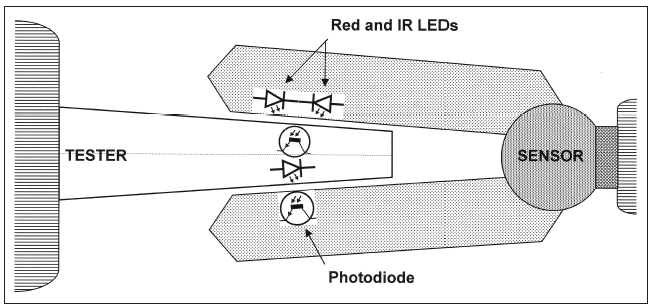: In some cases the sticky material on the probe might irritate your skin. Talk with your doctor if you have any kind of questions or concerns.
Pulse oximetry is a quick, noninvasive approach of estimating oxygenation and is continuous, enabling discovery of abrupt modifications in a client's scientific standing. Modern pulse oximeters determine the amount of red as well as infrared light in a location of pulsatile blood flow. Since traffic signal is largely soaked up by deoxygenated blood and infrared light is primarily taken in by oxygenated blood, the ratio of absorption can be determined.
Light contamination such as ambient light and also light emitted from various other probes can trigger interference as well as incorrect analyses. The site or the probe must consequently be convered. [4, 11, 12, 6] Transmission probes With transmission probes, the light emitter as well as sensor are positioned contrary each various other on pulsatile cells such as a digit or ear.
Our Oxygen Level Monitor Diaries
Reflectance probes With reflectance probes, the light emitter and sensor are positioned side-by-side on a flat body surface. The detector exists beside the light resource on a level surface such as the forehead. This information can be utilized noninvasively to assist review the hemodynamic status of a person and also to spot hypoxemia in numerous scientific settings.
A pulse oximeter offers a fast keep reading the saturation of oxygen in your blood. Some doctors think it is an useful gadget to contend residence during the coronavirus pandemic. Others aren't so sure. vgajic/Getty Images vgajic/Getty Images A pulse oximeter provides a quick continue reading the saturation of oxygen in your blood.

This week, we're thinking about inquiries concerning pulse oximeters. As the coronavirus continues to spread out, a small medical device called a pulse oximeter has actually started to fly off the shelves.
Getting The Oximeter Machine To Work
What is the worth of the device during this pandemic? Do you require to have one in your home? The initial inquiry is fairly easy to respond to. The 2nd is a bit more difficult. A pulse oximeter is a tiny digital gadget that approximates the saturation of oxygen in your blood.
(For an extra thorough clinical description, review this.) The term for reduced blood oxygen levels is hypoxemia. In this condition, your body's body organs may not function. Severe situations can hinder heart or mind feature. You've likely had your blood oxygen monitored by a pulse oximeter already. It's used throughout some physical examinations and also is taken into consideration important throughout procedures and extensive treatment.
By the time the individuals went to the medical facility, states Levitan, the infection had already damaged their lungs, and also many were in crucial problem. He saw COVID pneumonia patients with oxygen saturation degrees as reduced as half. "These COVID patients have adapted to this slow-moving, perilous decrease in their oxygen as well as they don't recognize it," he informed NPR.
The Ultimate Guide To Oximeter Use
The disease "kills by calmly creating [a reduction in] oxygen. When you are available in late in the disease, which is generally everyone that we currently have concerning the E.R., there is a high mortality," he says. Levitan says that in medication, earlier therapy leads to far better outcomes "and also that's real of COVID, too." Levitan thinks that in the midst of a respiratory pandemic, it makes good sense to have a pulse oximeter in the house just as you may have a thermostat to track fevers.
That 92% figure (or reduced) is an indication that "you ought to obtain assessed because this illness eliminates silently and you do not have to have substantial lack of breath" to be at danger. (Although individuals at high elevations could have degrees "in the low 90s as well as be fine," he includes.) Dr.
She stresses that individuals will certainly depend upon the tool's reading instead of calling a medical professional if they're feeling ill. "I think it's a little bit of a stretch to state that people ought to all have these at house," says Perkins, though she understands why people would desire them. "In general, I believe honestly, if individuals are starting to feel symptoms or really feel also a little short of breath, they must probably contact their physician, preferably," she says.
She states if you have symptoms consistent with the unique coronavirus, using a pulse oximeter as well as consulting with a medical professional can be an excellent approach. She is concerned concerning one risk: People can be incorrectly reassured by good numbers into believing they're not very sick. Individuals with COVID "can get exceptionally dried, individuals can get really weak," claims Perkins.
About the author